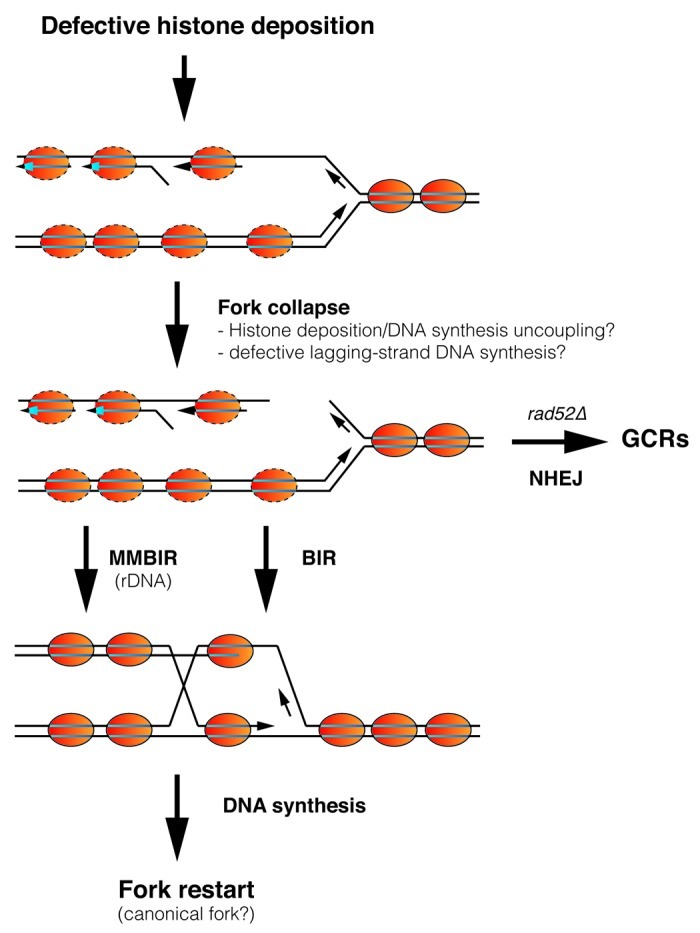
Figure 1. Replication fork collapse and rescue by defective nucleosome assembly. Replication fork advance is rapidly followed by nucleosome assembly of the newly synthesized DNA through a process that requires physical interactions between components of the replisome and chromatin assembly factors. A defect in the supply of histones causes some of the forks to collapse and break, likely by uncoupling of the processes of DNA synthesis and histone deposition. The temporal association between Okazaki fragment maturation and nucleosome assembly supports the idea that the lagging strand is more susceptible to breakage under conditions of defective chromatin assembly. Homologous recombination can efficiently repair the broken fork by BIR, although additional, non-recombinational microhomology-mediated BIR (MMBIR) mechanisms can also operate on rDNA. In some cases, the broken fork is repaired by nonhomologous end joining, leading to GCRs and genetic instability, an event that is triggered in the absence of homologous recombination. See text for more details.
